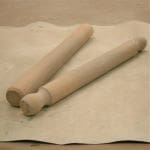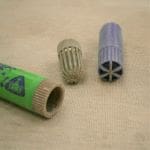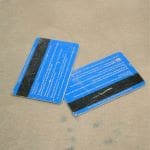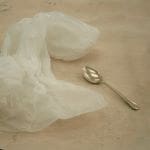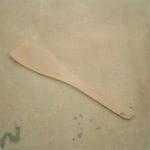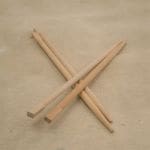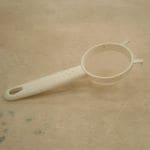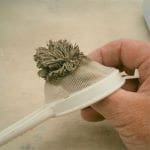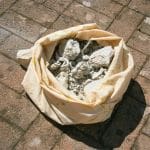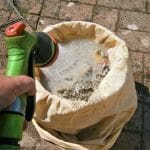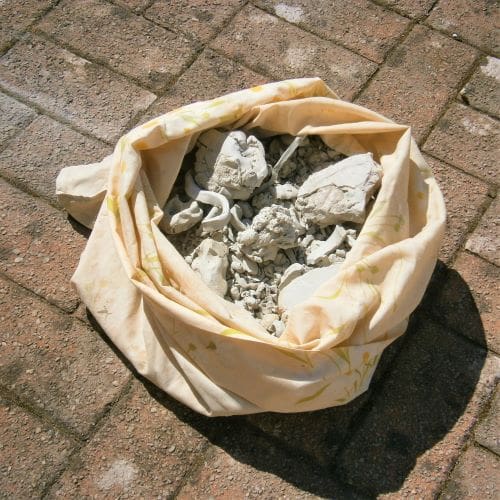
There are lots of online and physical shops supplying tools for ceramics – from the hobby superstore stocking tools and materials for hundreds of different crafts & hobbies, to ultra-specialist pottery suppliers with clays, glazes and equipment for the most advanced ceramicist.
As a ‘hobby’ potter, I have become quite creative over the years, sourcing effective tools from some surprising places with an emphasis on reusing, repurposing and recycling things that would otherwise be thrown away. These ‘found’ tools were an absolute boon when I was making all my ceramics at home during the Covid-19 lockdowns, when I had no access to my usual tools & equipment.
I will give you here a random selection of the tools I use for various processes of making pottery …
Slab rolling
Rolling pins – these have to be wooden to stop the clay sticking to them as you roll it out; very cheap ones can be bought from supermarkets’ budget kitchen range.
Impressed marks
Bottle tops, buttons, pen lids – look at the textures on the edge or the end, pressing them into the clay will give you all sorts of flowers, ridges and circles.
Smoothing/compressing
Plastic card, plastic bag – reuse expired gift cards for smoothing clay slabs before using them for slab building. Thin plastic bags are great for burnishing (polishing) leather-hard pieces.
Paddling
Wooden spatula – again, it has to be wooden so that the clay doesn’t stick to it as you shape it; very cheap ones can be bought from supermarkets’ budget kitchen range.
Making holes
Ballpoint pen inner, straw – you can create small holes with a ballpoint pen inner, larger ones with a straw.
Glaze/slip mixing
Chopsticks, coffee stirrers, tea strainer – chopsticks and flat coffe stirrers are great for mixing small amounts of brush-on glaze. An old tea strainer good for sieving small amounts of slip or glaze.
Grass/moss for sculptural work
Tea strainer – it’s like magic – press a small amount of soft clay through a tea strainer and you have moss!
Clay reclamation
Pillowcase – I save all my clay scraps in an old pillowcase until I have about half a pillowcase-full they the pieces are bone dry. I then put the whole thing, pillowcase and clay in a bucket of water until it is slaked down (that is until the clay has disintegrated into little granules). I then pull out the pillowcase, allow the water to drain and then wedge the clay in the usual way.
I’m always open to new ideas, tips and hints – so if you have anything you have found that works well, please share!

